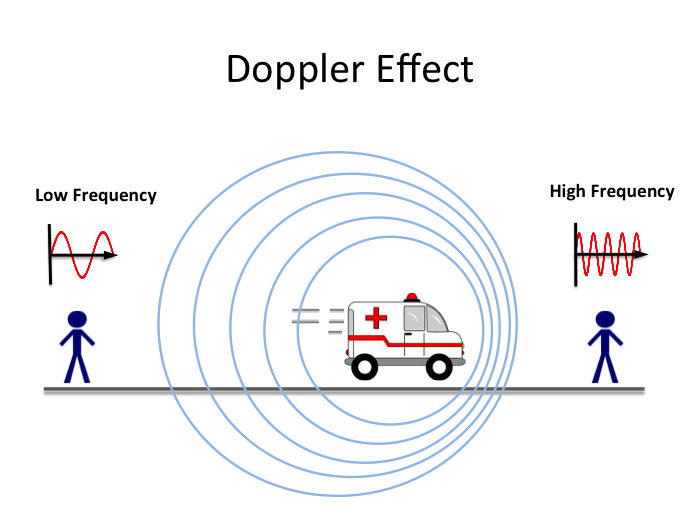waves | 2016-03-16

go to the beach — listen to and see the rhythmic, crashing sound of the water against the shore.
throw a rock in a still pool — see the ripples moving outward in perfect rings.
go out on a road on a hot day — see the shapes in the distance distort before your very eyes.
watch a duck on a pond — see the ripples moving outward but squishing and stretching around the duck. the ripples are closer together in front of the duck and farther apart behind it.
put some wax paper on a comb, put it to your lips and hum — hear the buzzbuzz and feel the super-tickly lips?
each of these is a mass moving and transferring energy: water waves caused by wind (air mass) and tides (moon mass); ripples caused by the introduction of a rock (land mass) into the water surface; heat from the light of the sun (gas/star mass) transferred into the air; the motion of the duck (duck mass) against the water surface; vocal chords (human mass) vibrating creating sound.
in the case of sound, a tuning fork makes a good example of how this works.
when you hit a tuning fork, the tines wiggle back and forth creating high and low pressure beside themselves. when the pressure is high, the surrounding particles in the air move out of the way. when the pressure is low, the surrounding particles can come back to where they were before. thus, the air particles are moving back and forth just like the tines. as long as those tines are moving, the surrounding particles are moving, too. and, much like a speed boat tipping your canoe, it’s not just the particles immediately beside the tines that move. there is a chain reaction of high pressure followed by low pressure, each particle pressing on the next until all the energy is expended. so, the little tympanic membrane in our ear, if it’s within the range of these fluctuating high-low pressure phenomena, starts to wiggle back and forth along with the tuning fork tines. since the tuning fork weighs what it does and is shaped as it is (i.e. it has a specific mass), it wiggles back and forth at a specific speed and it will create its high and low pressure zones at a measured and steady rate — i.e. the distance/time between each high or low remains the same. this, then, is called frequency: how frequently the wave reaches its high or low. thus, pitch is the same as frequency. what you’re hearing is A440, the standard tuning pitch. 440 is the Hertz of the wave (440 Hz), meaning that, per second, the wave goes fully up and down (high and low) 440 times. cool!
there are stories of construction workers dropping massive I-beams on the ground. the beams bounce a bit and then lie on the ground, seemingly still. yet, when these people in these stories touch the I-beam, shortly after it fell, they break their hands or arms. why? because waves. the I-beam hit the ground and started to vibrate, creating energy waves. these get transferred into the ground and the surrounding air but, due to the great mass of the metal, quickly become imperceptible to our ears or eyes — but it’s still moving, vibrating violently within its awesome mass. so, someone touches it with his puny arm and the bigger mass wins in a hurry.
but let’s talk about that duck for a minute.
his waves aren’t creating nice rings like the rock’s — they are squished at the front and stretched at the back. what is going on there? well, the duck keeps moving, so he’s creating waves in new places as he moves along. those waves begin to have less of an effect behind the duck and more in front of him, again due to high and low pressure zones. this exact same thing happens when a vehicle, say an ambulance, is driving along a road with its sirens blaring. in front of the ambulance, the sound waves get squished and behind it, they are stretched. thus, the same source produces different frequencies of waves, depending on where you are. that’s called the doppler effect.
that same effect of squishing or stretching happens with light as well. since light is waves, it also has different frequencies or different wavelengths. the set of wavelengths is call the spectrum and we’re all familiar with the colour spectrum of light — you know, the rainbow!
well, higher frequency light is closer to the purple/blue side of the spectrum (e.g. ultraviolet light) and lower frequency light is closer to the red side (e.g. infrared light). the stars in the night sky, if examined closely enough, have a faint red hue to them. this is called red shift and, in the case of the stars, means that they are moving away from earth. this, then, is why scientists claim that the universe is constantly expanding.
recently, scientists were all a-flurry because they had finally measured what einstein had thought to be true around 100 years ago. einstein said that all mass creates waves whenever it moves, whether we can perceive the waves or not. from a tiny dust mite to the very sun itself, we get waves. what happened recently is that scienticians detected the result of two black holes joining together; an astrological phenomenon as rare as it is astounding.
black holes are about as massive (not big as much as dense) as things get in the universe so, when they join each other via conflating gravities (things with lots of mass have lots of pulling force) they created some waves. where did they create those waves? in space, of course. and by space, in this case, we mean reality. what the scientists detected was actual ripples in space which moved our planet like it was the surface of a pool and the black holes were the rock! read up on this really cool stuff here. physics is cool.
so, waves are all around us and are responsible for many of the things we take for granted like music and heat. what a tremendous world we live in!
so far on waves.












